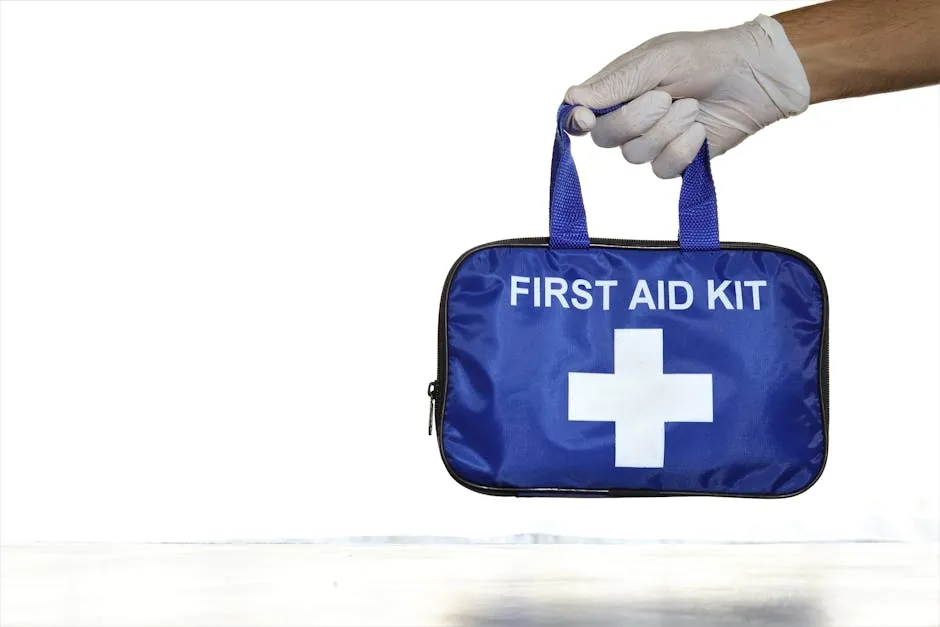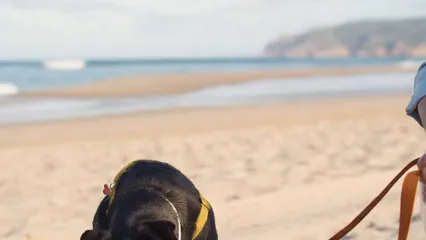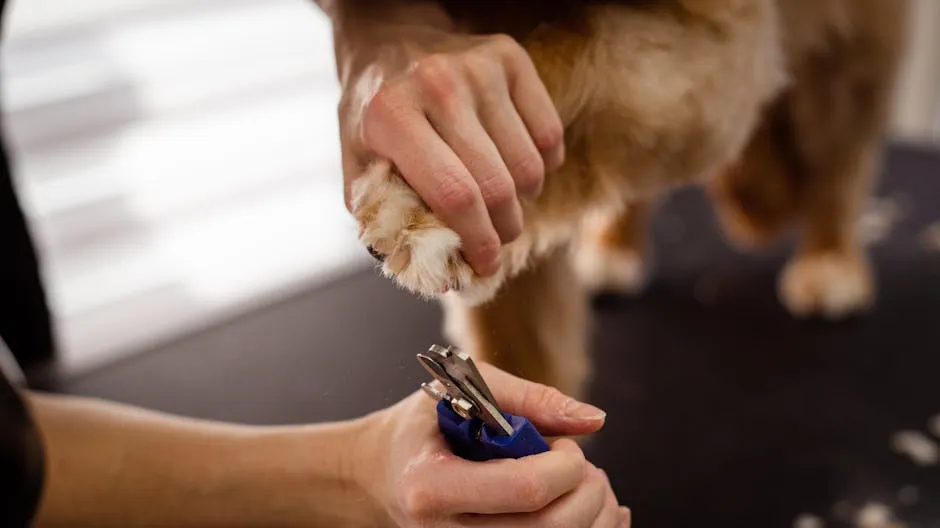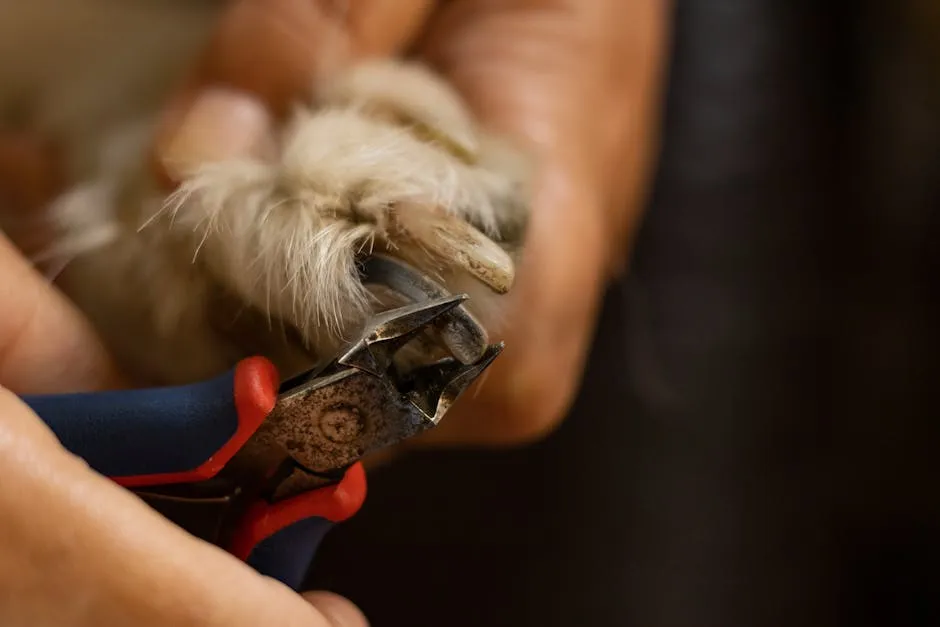
Why Are Grapes Bad for Dogs?
Introduction
Grapes pose a serious risk to dogs. Even a small amount can lead to severe health issues. This article will explain why grapes are toxic and what pet owners need to know to keep their furry friends safe. In addition to being knowledgeable, being prepared is key, and that’s where a Dog First Aid Kit comes in handy. It’s essential for every dog owner to have one on hand, just in case your buddy gets into a bit of trouble.
Summary and Overview
Grapes and raisins are highly toxic to dogs. The exact substance causing toxicity remains unknown. Most importantly, there is no established safe amount of grapes for dogs. Ingesting them can lead to acute kidney failure, a life-threatening condition. The symptoms can include vomiting, lethargy, and increased thirst. Pet owners should be aware of the risks. Prevention is crucial, as even a tiny piece can cause severe reactions. Awareness and education are key to preventing accidental ingestion of these fruits. And while you’re at it, why not treat your dog to some Dog Treats – Apple & Blueberry Flavor? They’re not just delicious but also a safe and healthy option for your furry friend.
Understanding Grape Toxicity
What Makes Grapes Toxic to Dogs?
The mystery of grape toxicity has puzzled veterinarians for years. Research suggests that tartaric acid might be a primary culprit. This compound is found in high concentrations in grapes. Mycotoxins, produced by molds, are also suspected. These toxins can severely affect a dog’s health. Interestingly, sensitivity to grapes varies among individual dogs. Some dogs may show symptoms after consuming just a few grapes, while others might not react at all. This unpredictability makes it essential to treat grape ingestion seriously. If you’re looking for ways to keep your dog engaged, consider investing in an Interactive Dog Puzzle Toy. It’s a fantastic way to stimulate their minds while keeping them away from any harmful snacks! Ongoing studies aim to uncover more about this toxicity. However, the lack of a definitive answer complicates matters for dog owners. The best approach is to assume all grapes are harmful and avoid giving them to pets altogether.
Symptoms of Grape Poisoning
If your dog eats grapes, watch for several key symptoms. Common signs include vomiting, diarrhea, and lethargy. You might also notice an increase in thirst. More severe symptoms can point to kidney failure, such as a lack of urine or abdominal pain. Typically, symptoms appear within a few hours of ingestion. However, in some cases, it can take up to 24 hours for these signs to show. It’s crucial to monitor your dog closely during this time. To ensure your dog’s comfort, consider investing in a Dog Bed – Orthopedic Memory Foam. A good night’s sleep is vital for recovery!
The Severity of Grape Toxicity
Grape toxicity is alarming because even a small amount can be hazardous. Research indicates that some dogs experience severe reactions after consuming just one grape. Reports show that about 50% of dogs that ingest grapes develop symptoms. Unfortunately, kidney failure can occur, sometimes leading to death. Statistics highlight the seriousness of this issue. From 2003 to 2004, 140 cases of grape poisoning were reported. Out of those, 50 dogs showed symptoms, and several did not survive. This unpredictability makes it essential to treat any grape ingestion with urgency. To be prepared, having a Pet Poison Helpline Book can be a lifesaver.
What to Do If Your Dog Eats Grapes
Immediate Actions
If you suspect your dog has eaten grapes, take action right away. First, stay calm. It’s essential to assess the situation quickly. Contact your veterinarian or the Pet Poison Helpline immediately. They can provide guidance tailored to your dog’s needs. Do not induce vomiting without professional advice. In some cases, doing so can worsen your dog’s condition. Your vet may recommend inducing vomiting if it’s safe and appropriate. This action should ideally occur within a few hours of ingestion. If your dog is a frequent traveler, a Pet Travel Carrier is a must-have for safe and comfortable trips. Keep a close eye on your dog for any symptoms. If they show signs of distress, seek emergency care. Treatment often involves intravenous fluids to prevent kidney damage. The sooner you act, the better the chances of a positive outcome. Always prioritize your pet’s health and safety by staying informed and vigilant.
Treatment Options
If your dog ingests grapes, immediate action is essential. The first step is often inducing vomiting. This procedure is most effective when done within a few hours of ingestion. Your veterinarian may use medications to help with this. Activated charcoal is another treatment option. It can help absorb toxins in your dog’s system, reducing the risk of further harm. If you’re concerned about your dog’s hygiene, a Dog Grooming Kit can help keep them looking and feeling their best. In more severe cases, intravenous (IV) fluids are crucial. They help keep your dog hydrated and support kidney function. Your vet will monitor their kidney health closely during this time. Continuous check-ups can help catch any signs of kidney damage early.
Prevention Strategies
Educating Family and Friends
Education is key to preventing grape toxicity. Make sure everyone in your home knows that grapes are harmful to dogs. This includes family members, friends, and especially children. If they don’t understand the risks, it’s easier for accidents to happen. Keep grapes and any products containing them out of reach. Consider putting up reminders in places where food is stored or prepared. This way, everyone remains aware of the potential dangers. Along with that, a Dog Nail Clippers with Safety Guard can be a great addition to your pet care routine to keep their grooming safe and efficient!
Safe Alternatives for Dogs
Thankfully, there are many safe fruits for dogs. Apples, blueberries, and watermelon are excellent choices. Just make sure to remove any seeds or pits. These fruits are not only safe but also nutritious. When choosing treats, look for products specifically designed for dogs. They should be free from harmful ingredients like grapes. Always read labels carefully. This ensures your furry friend enjoys only dog-friendly foods. If you’re looking for a unique treat, try a Dog Treat Recipe Book to whip up some delicious homemade goodies! By staying informed and cautious, you can protect your dog from the dangers of grapes and provide them with safe, tasty alternatives.
Common Myths and Misconceptions
“Some Dogs Can Tolerate Grapes”
You might have heard that some dogs can safely eat grapes. This belief is dangerous and misleading. The reality is that grape toxicity varies greatly among individual dogs. Some dogs may show no immediate symptoms after eating grapes, while others can experience severe reactions. There’s no known safe amount of grapes. Even one grape can trigger a toxic response in some dogs. Studies indicate that even small quantities can lead to acute kidney failure. Therefore, treating all grapes as harmful is the best approach. This unpredictability means that relying on anecdotal evidence is risky. Just because one dog seems fine after eating grapes doesn’t mean yours will be. It’s crucial to prioritize your dog’s health and avoid feeding them grapes entirely. Speaking of health, a Dog Health Handbook can provide valuable insights into keeping your dog healthy and safe.
“Grape Products Are Safe”
Another common myth is that grape products, like grape jelly or wine, are safe for dogs. Unfortunately, that’s not the case. While grape juice and jelly may seem less harmful, they still contain concentrated grape components that can be toxic. Therefore, it’s best to avoid giving your dog any grape-based products. Even baked goods that contain raisins can pose a danger. Many treats and snacks might include raisins or grape-derived ingredients, putting your dog at risk. If you’re unsure, it’s safer to stick with dog-friendly treats. Always read ingredient labels carefully to ensure your furry friend stays safe. Grapes and their products are not worth the risk. Educating yourself on this issue helps protect your dog from potential harm. Be vigilant and proactive about your dog’s diet to prevent accidental ingestion. Also, a Pet Safety Book can be a great resource for understanding the do’s and don’ts of pet care.
Conclusion
Grapes are undeniably dangerous for dogs. The variations in individual reactions make it crucial to avoid these fruits entirely. Remember that even a small amount can lead to severe health issues. If your dog accidentally ingests grapes, act quickly and consult your veterinarian. Prevention and awareness are key to keeping your dog safe. Stay informed, and always prioritize your pet’s well-being. And to enhance your dog’s life, consider a Dog Exercise Equipment to keep them active and healthy.
FAQs
Can one grape really kill a dog?
Yes, even one grape can be dangerous. Reports show that some dogs develop severe reactions after eating just a single grape. This can lead to kidney failure, which might be fatal without prompt treatment. The risk is unpredictable; some dogs may ingest grapes with no immediate symptoms, while others can become critically ill. It’s essential to understand that no amount of grape is considered safe for dogs.
What are the symptoms of grape poisoning?
Symptoms of grape poisoning can vary. Common signs include vomiting, diarrhea, and lethargy. You might also notice increased thirst or a lack of appetite. These symptoms can appear within a few hours after ingestion, but sometimes they may take up to 24 hours to show. Severe symptoms can include abdominal pain and changes in urination. If you see any of these signs, seek veterinary help immediately.
What should I do if my dog ate raisin bread?
Raisin bread is risky for dogs. Raisins are toxic, just like grapes, and any product containing raisins can lead to poisoning. If your dog eats raisin bread, contact your veterinarian right away. They can provide instructions based on your dog’s size and health status. Acting quickly can make a significant difference in your dog’s recovery.
Is grape juice safe for dogs?
No, grape juice is not safe for dogs. Although many believe liquids are less harmful, grape juice contains concentrated grape components that can still be toxic. It’s best to avoid giving your dog any grape-based products, including juices and jellies. Stick to dog-friendly treats and fruits.
How can I prevent grape poisoning?
Preventing grape poisoning is simple yet crucial. First, keep grapes and raisin products out of reach. Educate your family and friends about the dangers of these fruits to dogs. Also, check food labels carefully. Many foods, like granola bars and baked goods, may contain raisins or grapes. Being vigilant helps protect your furry friend from accidental ingestion.
Please let us know what you think about our content by leaving a comment down below!
Thank you for reading till here 🙂
All images from Pexels




